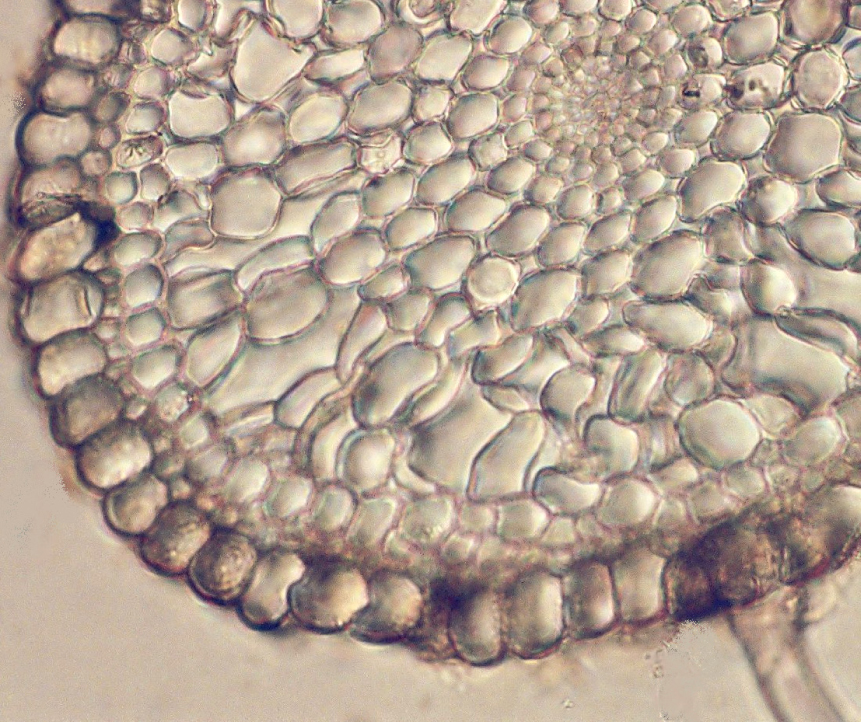A usage of morpho-anatomical features of Ruppia cirrhosa (Petagna) vegetative organs for determination of the optimal depth of growing
Abstract
The anatomic structure of the seagrass Ruppia cirrhosa vegetative organs has been researched for revealing the anatomic characteristics which can be used for indication of the optimal depth of growing. It has been revealed that root and rhizome parameters extend and reach the maximum points while depth increases. The anatomical parameters of leaves have ascertained as the most variable features, which decrease while depth grows, and that restricts Ruppia cirrhosa expansion at the depth of more than 7 m below s.l.
References
Киреева Е.В. 2001. Методика определения объема полостей листа и стебля высших водных и наземных растений. Экология моря 58: 84–86.
Куликова Н.М. и Колесникова Е.А. 1976. Ассоциации цветковых растений в Севастопольской бухте. Биология моря 36: 17–25.
Филлипс Р. и Мильчакова Н.А. 2003. Экосистемы морских трав. Морской экологический журнал 2 (2): 29–39.
Abal E.G. & Dennison W.C. 1996. Seagrass depth range and water quality in southern Moreton Bay, Queensland, Australia. Marine & Freshwater Research 47 (6): 763–771.
Barnabas A.D., Butler V., Steinke T.D. 1977. Zostera capensis Setchel. I. Observation on the fine structure of the leaf epidermis. Pflanzenphysion 85 (5): 417–427.
Beer S. & Waisel Y. 1982. Effects of light and pressure on photosynthesis in two seagrasses. Aquatic Botany 13: 331–337.
Calado G. & Duarte P. 2000. Modelling growth of Ruppia cirrhosa. Aquatic Botany 68 (1): 29–44.
Dennison H.C. 1987. Effect of light on seagrass photosynthesis, growth and depth distribution. Aquatic Botany 27: 15–26.
Duarte C.M. 1991. Seagrass depth limits. Aquatic Botany 40 (4): 363–377.
Milchakova N.A. 2003. The seagrasses of the Black, Azov, Caspian and Aral seas. In: Green E.P. & Short F.T. (eds). World Atlas of Seagrasses: 59–64. University of California. Press, Berkeley.
Ribera G., Coloreu M., Rodriguez-Prieto C., Ballesteros E. 1997. Phytobenthic assemblages of Addaia Bay (Menorca, western Mediterranean): Composition and distribution. Botany Marine 40 (6): 523–532.
Rieger M. & Litvin P. 1999. Root system hydraulic conductivity in species with contrasting root anatomy. Journal of Experimental Botany 50 (331): 201–209.
Short F.T. 2001. Global seagrass distribution. In: Short F.T. & Coles R.G. (eds). Global seagrass research methods: 5–31. Elsevier Science B.V., Amsterdam.
Thayer G.W., Kenworthy W.J., Fonseca M.S. 1984. The ecology of eelgrass meadows of the Atlantic coast: A community profile. Fish and Wildlife Service, Portland.
Tomlinson P.B. 1980. Leaf morphology and anatomy in seagrasses. In: Phillips R.C. & McRoy C.P. (eds). Handbook of seagrass biology, and ecosystem perspective: 7–28. Garland STPM Press, New York.
Verhoeven J.T.A. 1979. The ecology of Ruppia – dominated communities in Western Europe. 1. Distribution of Ruppia representatives in relation to their autecology. Aquatic Botany 6 (3): 197–268.


This work is licensed under a Creative Commons Attribution-NonCommercial-NoDerivatives 4.0 International License.
The journal is licensed by Creative Commons under BY-NC-ND license. You are welcome and free to share (copy and redistribute the material in any medium or format) all the published materials. You may not use the material for commercial purposes. You must give appropriate credit to all published materials.
The journal allow the author(s) to hold the copyrights and to retain publishing rights without any restrictions. This is also indicated at the bottom of each article.





